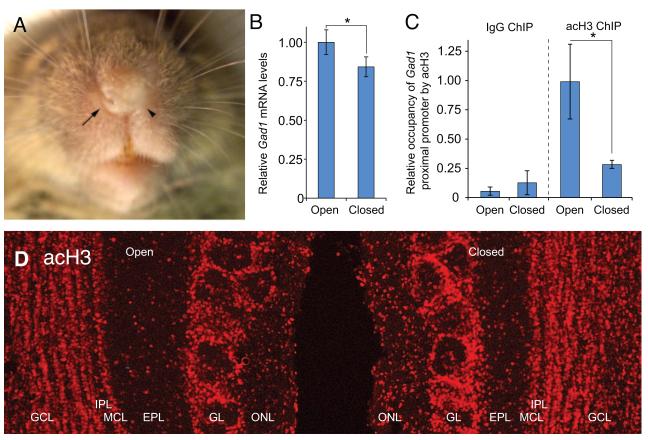Figure 2.
Odorant-mediated regulation of Gad1 transcription in the olfactory bulb. A, a mouse subjected to odorant deprivation by unilateral naris occlusion. The open and closed nares are indicated by the arrow and arrowhead, respectively. B, qRT-PCR analysis reveals Gad1 mRNA levels are reduced in the olfactory bulb that is ipsi-lateral to the closed nares (closed) when compared to the bulb corresponding to the unobstructed contra-lateral nares (open). C, chromatin immunoprecipitation (ChIP) shows that occupancy of pan- acetylated Histone H3 (acH3) on the Gad1 proximal promoter is dramatically reduced in the closed bulb relative to the open bulb. For comparison, negative control ChIP experiments with antibodies to rabbit IgG are also shown. D, immunofluorescence analysis for acH3 in the olfactory bulbs of mice subjected to unilateral naris occlusion shows that the reduced stimulation produced by odor deprivation does not diminish total levels of acH3 in the bulb ipsi-lateral to the naris closure (closed). Rather, there appears to be a slight increase in the acH3 intensity in this bulb. Thus, the changes in acH3 occupancy on the Gad1 proximal promoter observed in C are the result of mechanisms that specifically target the Gad1 promoter.

